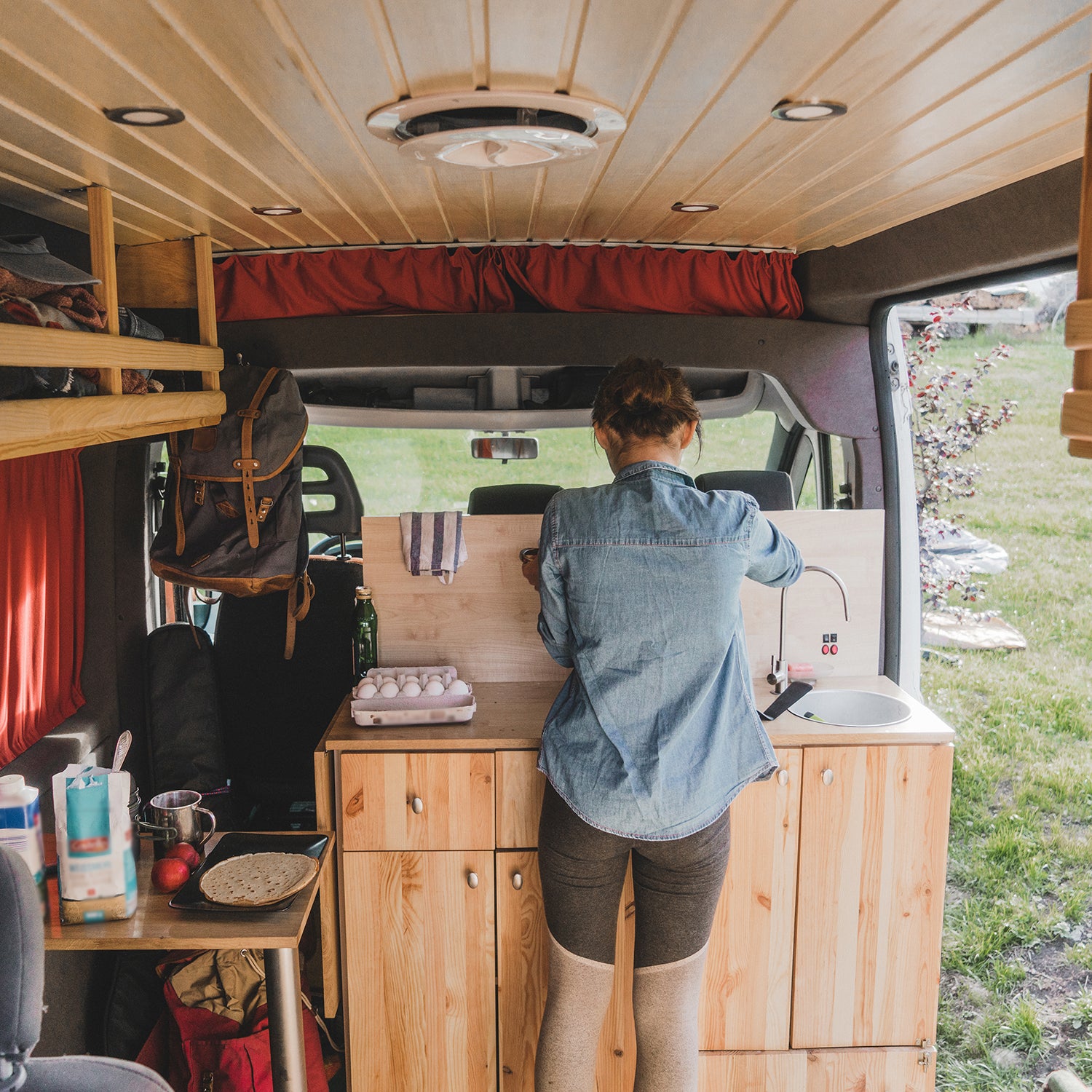Now that the country is opening up again, you might be itching to jump in a van or camper and hit the road. And while burgers and ramen make fine meals for the transient, at a certain point you’ll want to level up your cooking game. One question remains: What’s the best way to prepare a feast of the ages when you’re confined to a small space? Here’s how to turn that van kitchen into the dining destination of your dreams.
Do the Prep Before You Go
Professional chefs refer to the technique of getting everything kitchen-ready as mise en place, or “everything in its place.” Applying this same methodology to life on the road will make mobile cooking easier. “The optimum move, when traveling light, is to kind of do as much as you possibly can before you get there,” says Jeremy Blutstein, a James Beard Award–nominated private chef. “Making things smaller to bring with you is obviously the best move,” Blutstein says.
He suggests investing in a FoodSaver or Cryovac machine for preportioning proteins and produce. Both create a vacuum seal by sucking out excess air in storage bags and can be purchased for as little as $40. If you don’t have one of these machines, you can still portion these items and seal them in airtight, reusable containers or pouches. Break down any packaging, and transfer that food to space-saving quart and pint containers (this is also a good time to pre-chop veggies). That way, Blutstein says, when you arrive at your destination, all you need to do is wait for water to boil.
Stock Up on Multi-Use Staples
Bring a cache of flexible ingredients, like high-quality olive oil, vinegar, salt, pepper, butter, and savory herbs (rosemary and thyme, both of which last for a long time in the refrigerator, are good choices). Blutstein also suggests fish sauce, which is shelf-stable and adds an incomparable depth of flavor. Ultimately, he says, it’s best to select a handful of items that cover the palate basics: sweet, salty, sour, spicy, and acidic. He recommends honey, sriracha (or another type of hot sauce), and a multipurpose vinegar, like red wine or sherry, any of which can serve as a great building block for simple dishes, he says.
For knives, all you need are a sharp chef’s knife and a small utility knife. And when selecting produce you intend to bring along, consider those that can be used in a variety of dishes and that don’t require refrigeration, like tomatoes, apples, onions, lemons, garlic, avocados, and even dried mushrooms. Overall, says Blutstein, travelers should expect to have limited cold space, and plan accordingly.
Build a Tiny Pantry
You don’t need to travel with your entire kitchen, but do pack a little bit of flour and sugar. Neither requires refrigeration, and they can be combined with butter and fresh fruit to create, say, a quick, ovenless skillet cake. Opt for grains that can be transported in bags, as well as dried or frozen veggies where applicable. “Any sort of dry goods—either rice, or pasta, or beans, or anything of that nature—limits the amount of refrigeration that you would need,” Blutstein says. Cured meats like prosciutto and fermented foods like kimchi, he adds, are great additions to an on-the-go pantry, since they offer big flavors in dishes but usually don’t require refrigeration before being opened.
Embrace Limitation
Blutstein recommends planning combination hot-cold meals, which lean into the constraints of small kitchens. Serving a mixed meal of hot, cold, and room-temperature foods, he says, makes preparation easier, since there may be minimal ways to keep things hot in a van. That could mean a seared chicken breast over a salad of greens, or even braised short ribs served with a pickled or crunchy side salad.
You can also embrace the single-pot ethos, making stews, pasta, fish, and vegetable dishes using a single piece of equipment. Dusting proteins, like chicken and fish, in flour before cooking them will make the sauce you produce in that same pan thicker and better for grains like pasta and farro. You’ll need a deeper pan for pasta, but you can still cook it, strain it, and create a quick sauce from kitchen ingredients all in that same pan. In the end, when you’re cooking on the road, less is definitely more.

